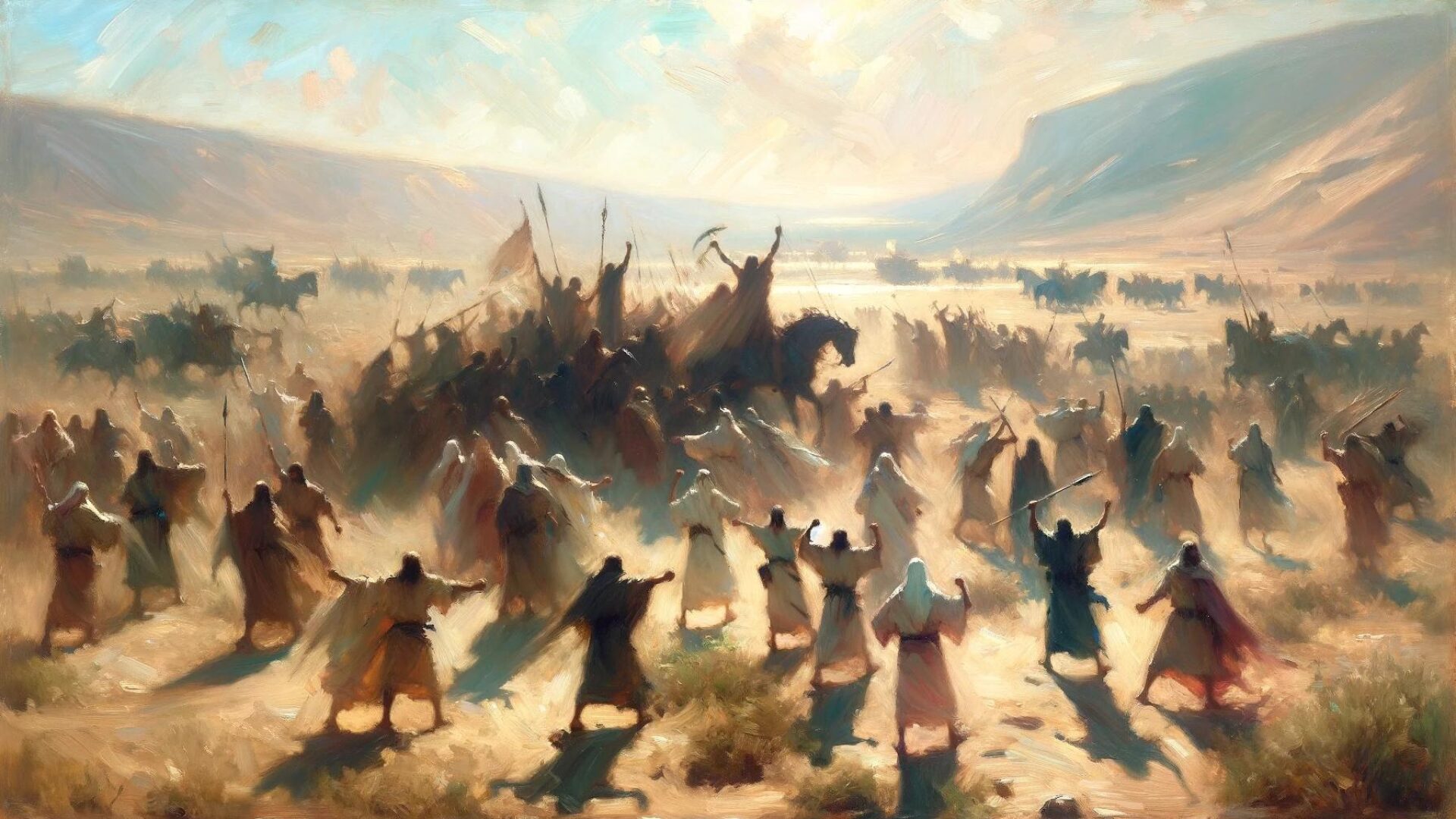Holy Saturday, also known as the Black Saturday or Easter Eve, is an important day in Christian tradition. It falls between Good Friday and Easter Sunday and is observed as a day of mourning and reflection on the death and burial of Jesus Christ.
The significance of Holy Saturday lies in its role as a bridge between the crucifixion and resurrection of Jesus. It is a day of waiting and anticipation, as Christians reflect on the sacrifice made by their Savior and prepare for his return on Easter Sunday.
During Holy Saturday, many Christians observe a period of solemn reflection and prayer, abstaining from activities and festivities. Some attend special church services, while others spend time in quiet contemplation at home.
Key Takeaways:
- Holy Saturday is an important day in Christian tradition, observed as a day of mourning and reflection on the death and burial of Jesus Christ.
- It is a bridge between the crucifixion and resurrection of Jesus, marking a period of waiting and anticipation.
- Many Christians observe a period of solemn reflection and prayer on Holy Saturday.
Understanding Holy Saturday in Christianity
Holy Saturday is a significant day in the Christian faith observed during the Holy Week, which falls on the Saturday before Easter Sunday. Christianity identifies this day as the time when Jesus Christ was buried in the tomb after his crucifixion, and it’s believed to be a time of waiting, mourning, and reflection.
Symbolism and Significance of Holy Saturday
Holy Saturday is a time of preparation and anticipation for Christians around the world. It is a day of profound spiritual significance, emphasizing the notion of spiritual darkness that precedes the light of the resurrection. This day is also known as the “Great Sabbath” as it lies between Good Friday, the day Christ was crucified, and Easter Sunday, the day of His resurrection.
Christians believe that Holy Saturday is a time of waiting for the resurrection. This waiting time symbolizes the darkness of the world before Christ’s resurrection brings light and hope to the world. It represents the time when Christ descended into hell to liberate those who had died before His coming.
The Importance of Waiting and Reflection
Holy Saturday provides Christians with an opportunity to reflect on the sacrifices made by Jesus Christ for the redemption of humanity. It’s a time to meditate on the importance of waiting and considering the deeper meanings of faith, love, and hope. This day is a solemn reminder for Christians to take time to prepare themselves for the joy and celebration of Easter Sunday.
“On Holy Saturday, the Church waits at the Lord’s tomb, meditating on His passion and death and on His descent into hell, and awaiting His resurrection.”
Holy Saturday is also an opportunity for Christians to reconnect with their faith, renew their relationship with Christ, and recommit to their spiritual lives. This day is an invitation to look inward and examine one’s own spiritual journey, to identify areas where growth is needed and to find ways to strengthen one’s faith.
Holy Saturday Rituals and Observances
On Holy Saturday, Christians around the world observe the day with a variety of religious and spiritual practices. Many of these rituals have been handed down for centuries and hold deep significance for those who observe them.
One of the most common rituals practiced on Holy Saturday is the Blessing of the Easter Food. This tradition involves bringing baskets of food, typically including eggs, bread, meat, and cheese, to be blessed by a priest. The food is then eaten on Easter Sunday as a reminder of the joy and abundance of the holiday.
Another common observance on Holy Saturday is the lighting of the Paschal candle. This candle, which represents the light of Christ, is typically blessed by a priest during a special ceremony and then lit in the church. The candle is left burning throughout the Easter season, reminding Christians of the resurrection of Jesus.
Many Christians also observe a period of fasting and reflection on Holy Saturday. This time of introspection allows believers to contemplate the significance of the death and resurrection of Jesus and prepare themselves spiritually for the celebration of Easter.
In some cultures, the tradition of vigil-keeping on Holy Saturday has also been observed. This involves keeping watch throughout the night in remembrance of the time when Jesus lay in the tomb. The vigil typically involves readings, prayers, and a period of quiet reflection.
Some common Holy Saturday rituals include:
- Blessing of the Easter Food
- Lighting of the Paschal candle
- Period of fasting and reflection
- Vigil-keeping
As with many religious observances, the specific practices and customs associated with Holy Saturday can vary depending on cultural and regional traditions. However, the underlying message of this day remains the same: to remember the sacrifice of Jesus and prepare for the joyous celebration of his resurrection on Easter Sunday.
Holy Saturday Traditions
Over the years, several rituals and traditions have developed around Holy Saturday, reflecting the cultural and regional diversity of Christianity. Here are some of the most popular traditions:
| Tradition | Description |
|---|---|
| The Blessing of the Easter Basket | This is a popular Polish tradition where baskets of Easter food are brought to church to be blessed by a priest. The contents of the basket have specific meanings, such as bread symbolizing Jesus’ body, eggs symbolizing new life, and horseradish symbolizing the bitter sacrifice of Christ. |
| The Paschal Candle | It is a large, white candle that is blessed and lit during the Easter Vigil. It symbolizes Jesus as the light of the world and is often adorned with Christian symbols and images. |
| The Easter Fire | This is a tradition followed by some churches where a bonfire is lit outside the church on Holy Saturday. The fire symbolizes the light of Christ and is used to light the Paschal Candle during the Easter Vigil. |
| The Tomb of Jesus | Some churches create a model of the tomb of Jesus, which is often placed in the sanctuary. On Holy Saturday, the tomb is left empty, symbolizing Jesus’ resurrection on Easter Sunday. |
These are just a few of the many traditions that have developed around Holy Saturday. Each one reflects the rich history and diversity of the Christian faith.
Reflecting on Holy Saturday
While Holy Saturday is often a solemn and reflective day, it is an opportunity for Christians to contemplate the deeper meaning of their faith. The day after Good Friday and before Easter Sunday, it represents a time of waiting and uncertainty.
At its core, Holy Saturday is a time of introspection and self-reflection. It is a time to consider one’s own relationship with God and to remember the sacrifices made by Jesus Christ on the cross.
For many Christians, this day is a reminder of the human condition and the reality of suffering. It is a time to acknowledge the pain and suffering that exists in the world and to pray for those who are in need.
Reflecting on Holy Saturday can also be a time to consider the teachings of Jesus and how they can be applied in everyday life. It is a time to renew one’s commitment to living a life of compassion, forgiveness, and service to others.
Ultimately, Holy Saturday is a time to prepare for the joyous celebration of Easter Sunday. By reflecting on the meaning of this day, Christians can deepen their understanding of the Christian faith and strengthen their relationship with God.
Holy Saturday Observance in the United States
In the United States, Holy Saturday is observed with great reverence by Christians. It falls between Good Friday and Easter Sunday, marking the time when Christ’s body rested in the tomb before his resurrection. While Holy Saturday is not a federal or public holiday in the United States, many churches hold special services and rituals to commemorate this sacred day.
One of the most significant observances in the United States is the Easter Vigil Mass, which takes place on the evening of Holy Saturday. This service includes the blessing of the Easter fire, the lighting of the Paschal candle, and the reading of key biblical passages that recount salvation history. The Easter Vigil Mass culminates in the celebration of Christ’s resurrection, signaled by the ringing of bells and the singing of the “Glory to God in the Highest” hymn.
Aside from attending church services, some Christians in the United States observe Holy Saturday by fasting and abstaining from meat. Others spend time in quiet reflection, contemplating the significance of Christ’s death and resurrection. Some families also engage in special traditions, such as dyeing Easter eggs, preparing traditional foods, or participating in Easter egg hunts.
The observance of Holy Saturday varies among different Christian denominations in the United States. For example, Orthodox Christians may hold special services on Holy Saturday that include the blessing of food and water, the reading of scriptures, and the singing of hymns. Meanwhile, some Protestant churches hold prayer vigils or offer community service projects as a way of observing Holy Saturday.
While Holy Saturday observance may differ depending on the individual or church community, its significance as a day of reflection and anticipation remains consistent. As Christians prepare to celebrate the joy of Christ’s resurrection, Holy Saturday serves as a solemn reminder of the sacrifice that made this miracle possible.
The Essence of Holy Saturday
In conclusion, Holy Saturday is a significant day in the Christian faith, marked by introspection and observances. It is a day of reflection on the sacrifice that Jesus Christ made for humanity, and a time to prepare for the joyous celebration of Easter Sunday.
As we commemorate this day, we are reminded of the struggle between darkness and light, death and resurrection. It is a day to contemplate our own mortality and the hope for eternal life.
Moving Forward
As we move forward from Holy Saturday, let us carry with us the lessons of faith, hope, and resurrection. Let us strive towards a life of compassion, forgiveness, and love.
We hope that this article has shed light on the significance of Holy Saturday and provided insights into the various rituals and observances associated with this day. We encourage readers to reflect on the deeper meaning of this day, and to carry it with them throughout the year.





